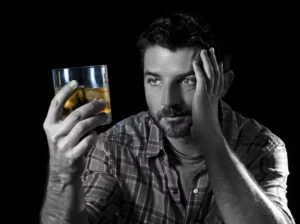
Alcohol shakes are reduced when you flush the toxins out of your system. Staying hydrated also helps you feel better, sleep better, and feel full without consuming too many calories. https://ecosoberhouse.com/ Tremors usually begin within 5 to 10 hours after someone’s last drink. Surgery might be an option if your tremors are severely disabling, and you don’t respond to medicines.

Why You Feel Shaky After Drinking
These tremors typically begin within 5 to 10 hours after the last drink and can worsen over 48 to 72 hours. They may be accompanied by other symptoms of withdrawal such as anxiety, sweating, nausea, and insomnia. Tremors or shakes during alcohol withdrawal are involuntary, rhythmic muscle contractions leading to shaking movements in one or more parts of the body. They most commonly affect the hands, but they can also occur in the arms, head, and even the voice. When the suppressing effect of alcohol is suddenly reduced or removed, your brain’s hyperactive state is unrestrained, leading to symptoms like shakes.
How to Beat the Alcoholic Shakes
In contrast, delirium tremens (often abbreviated as DTs) represents the most severe form of alcohol withdrawal, occurring in a small percentage of individuals detoxifying from alcohol. Symptoms typically emerge between 48 to 96 hours after the last drink. DTs are marked by pronounced confusion, hallucinations, severe tremors, and autonomic hyperactivity, which can include rapid heartbeat and elevated blood pressure. Crucially, delirium tremens can be life-threatening and often requires immediate medical intervention.
What can the recovering alcoholic do to reduce tremors?
Alcohol tremors typically take effect around 6-8 hours after you finish drinking and peak around hours after your last drink. People who experience tremors and other symptoms of alcoholism should contact a doctor. Different from alcohol shakes, this condition may also cause agitation and hallucinations. Others report experiencing hangover shakes in their arms, eyes, head, and even their voice. Symptoms of ARBD and ARBI include minor changes in your ability to think or remember things. Continued drinking with ARBD or ARBI puts you at risk for severe brain damage, including dementia.
Benzodiazepines for Alcohol Shakes and Withdrawal
- Clonidine is the most commonly prescribed alpha-2 adrenergic agonist for patients undergoing alcohol detox.
- The following quiz is called the AUDIT, which is short for Alcohol Use Disorders Identification Test.
- Deep brain stimulation involves placing an electrode deep within the brain.
- If you undergo professional alcohol detox, you may be given certain medications to reduce symptoms, such as benzodiazepine, thiamine, or propranolol.
It’s like your body’s alarm system going off, telling you that you need to eat something to get those sugar levels back up. As the alcohol leaves your body, however, your central nervous system, along with part of your sympathetic nervous system, remains unbalanced. American Addiction Centers (AAC) is committed to delivering original, truthful, accurate, unbiased, and medically current information.
Have more questions about our programs?
Alcohol is a depressant, which is a substance that reduces activity in the brain and interferes with its communication pathways. Drinking alcoholic beverages slows down brain functions and inhibits certain chemicals that help regulate mood. In some mild cases, the tremor may be light and hardly noticeable, but in the more severe cases, it may cause pain and other symptoms that can interfere with daily activities. how to stop alcohol shakes When you drink alcohol, your body responds by decreasing the number or sensitivity of receptors that bind to the neurotransmitter gamma-aminobutyric acid (GABA). It simultaneously increases the number or sensitivity of receptors that bind to glutamate, another neurotransmitter, in a bid to counter the sedative effects of alcohol. Why do hangover shakes happen, and are they a sign of anything serious?
- They are an unsettling reminder of the influence alcohol has on your body.
- For many, sustaining sobriety involves regular attendance at support groups, like Alcoholics Anonymous or SMART Recovery, where the camaraderie of fellow members encourages ongoing commitment.
- After a session of binge drinking or heavy alcohol use, these so-called “hangover shakes” can leave you feeling weak and wobbly for the entire day.

During this time, doctors monitor a person’s vital signs and address serious complications immediately. Although alcohol nerve damage is not life-threatening, it will reduce a person’s quality of life and require ongoing supportive treatment. Stopping alcohol shakes when they are caused by cerebellar tremors will likely require prescription medications that slow down cell-to-cell signaling within the central nervous system. A wearable electronic peripheral nerve stimulation device (Cala Trio) is a newer treatment option for people with essential tremor.
- We are visually recognizing our growth with a unified look that better reflects who we are today and the passion we have for helping everyone with their addiction and mental health recovery journeys.
- The reason why heavy drinkers perspire heavily at night (and often during the day as well) involves alcohol stimulating and depressing the nervous system simultaneously.
- Delirium tremens can produce seizures, withdrawal hallucinations, and in some cases it’ll slow the respiratory system to a crawl, leading to organ failure and, at times, a full system shutdown.
- Typically, people tend to label someone with the shakes as an “extreme” AUD sufferer, most likely in their later years of alcoholism.
- In which case, let’s first address the patient who does not have a history of alcohol abuse, nor do they suffer from AUD.
Alcohol Shakes & Delirium Tremens
